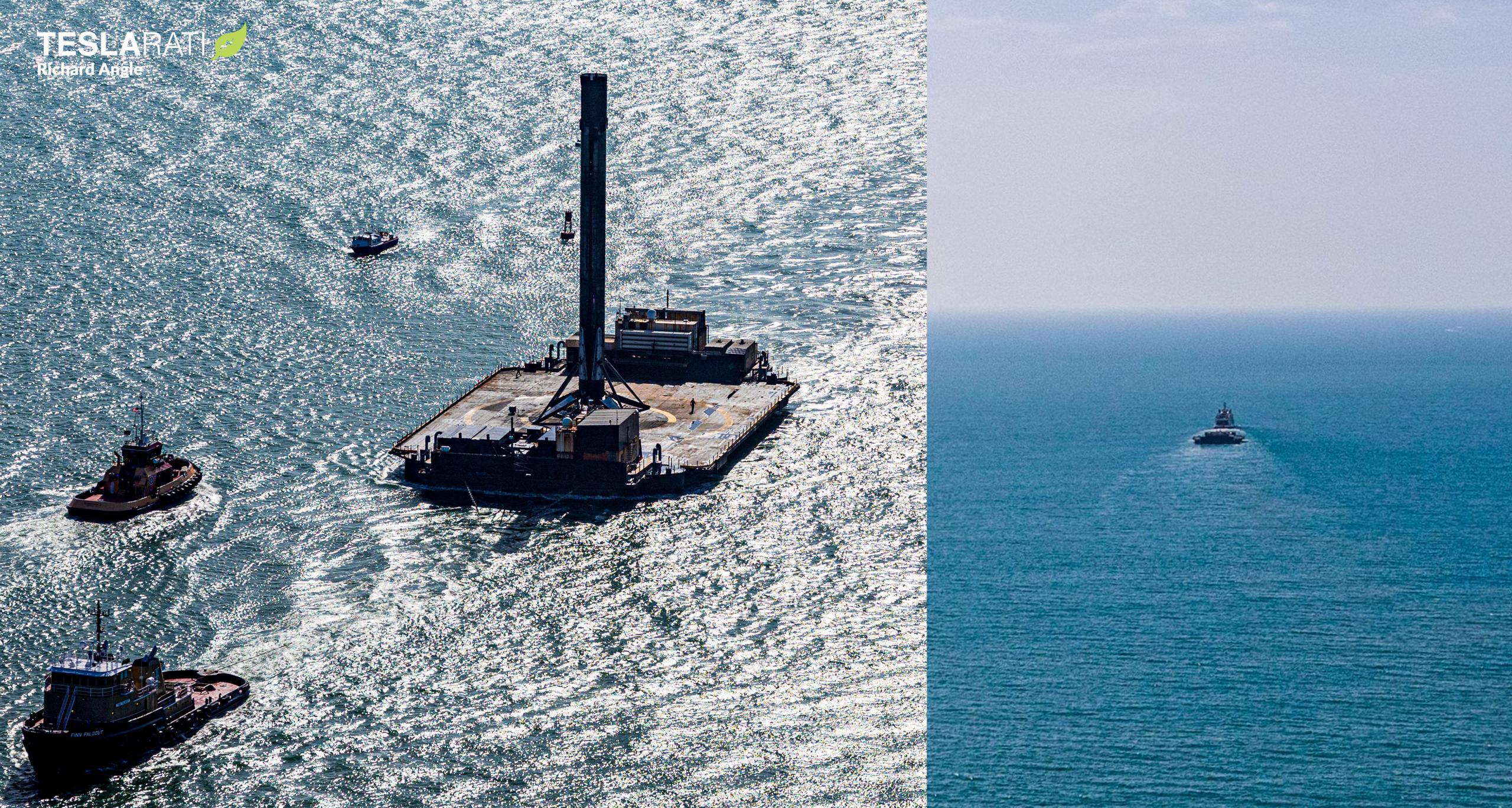
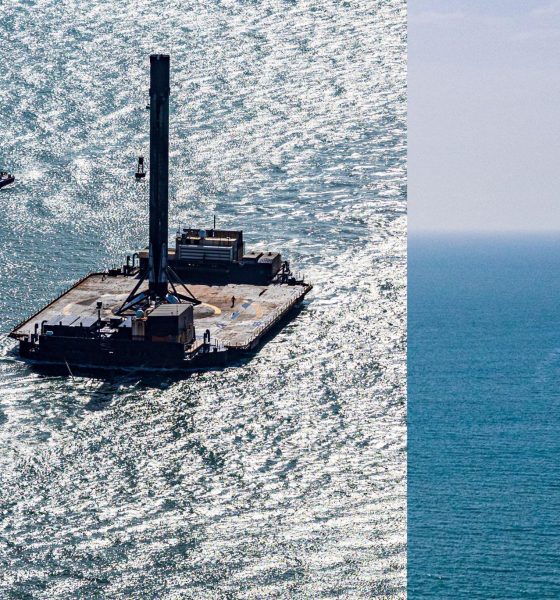
News
SpaceX wraps up Falcon 9 launch, sends drone ship to sea for the next one
SpaceX’s two East Coast drone ships have passed each other by as one returned from the company’s most recent Falcon 9 launch and the other headed to sea for the next one.
An unsurprising consequence of SpaceX’s extraordinary 2022 launch cadence goal, it just so happened that the company’s next launch was scheduled such that the upcoming Starlink mission’s drone ship left Port Canaveral at almost the exact moment that another drone ship was returning from its last launch. The timing was so perfect that the two converted barges sailed past each other just a thousand or so feet apart and just a few thousand feet outside of the mouth of the port both call home.
Drone ship Just Read The Instructions (JRTI) was returning to port after about a week at sea with Falcon 9 booster B1062, which successfully launched Egypt’s Nilesat-301 communications satellite into a supersynchronous geostationary transfer orbit (GTO) on June 8th. Heading in the opposite direction, drone ship A Shortfall of Gravitas (ASOG) – towed by support ship Doug – left port and began its journey about 650 kilometers (~400 mi) downrange to support Starlink 4-19, SpaceX’s next launch.
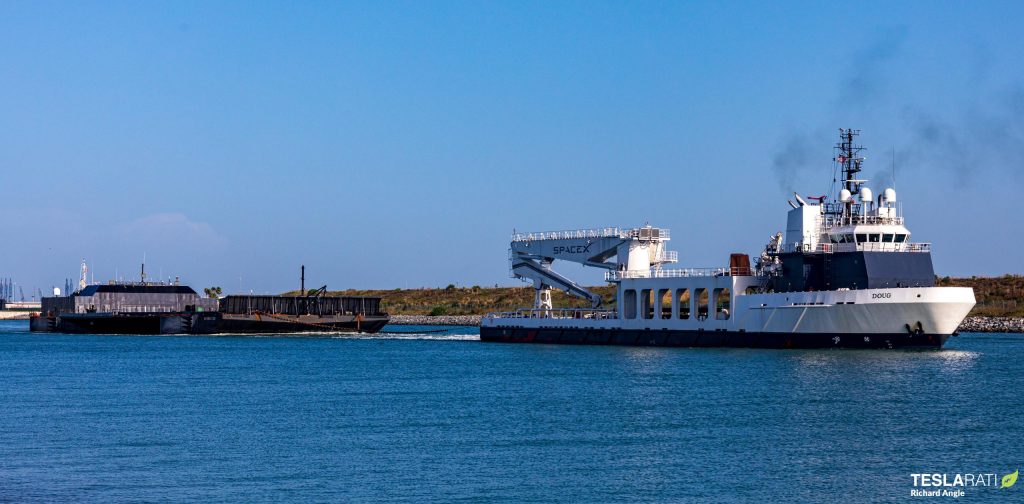
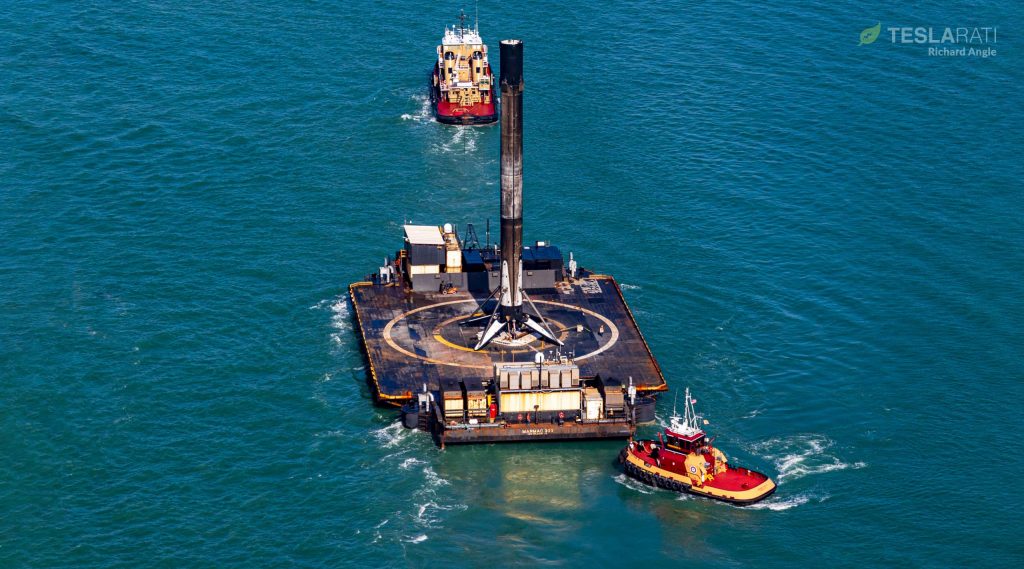
Nilesat-301 was SpaceX’s 23rd launch of 2022 and Falcon 9 B1062’s seventh launch overall, as well as the booster’s sixth launch in less than 12 months. In early 2022, CEO Elon Musk announced that SpaceX was targeting an average of one launch per week throughout the calendar year. He later revised that target to 60 launches or 1.15 launches per week after a few months of undeniable success. Set in 2021, SpaceX’s annual record is 31 Falcon launches, followed by 26 in 2020. In 2022, SpaceX is on track to launch more than 26 times in the first half of the year. In fact, after Nilesat-301, the company has another five missions tentatively scheduled to launch in June for a total of 28 in H1 2022 if all manage to avoid significant delays.
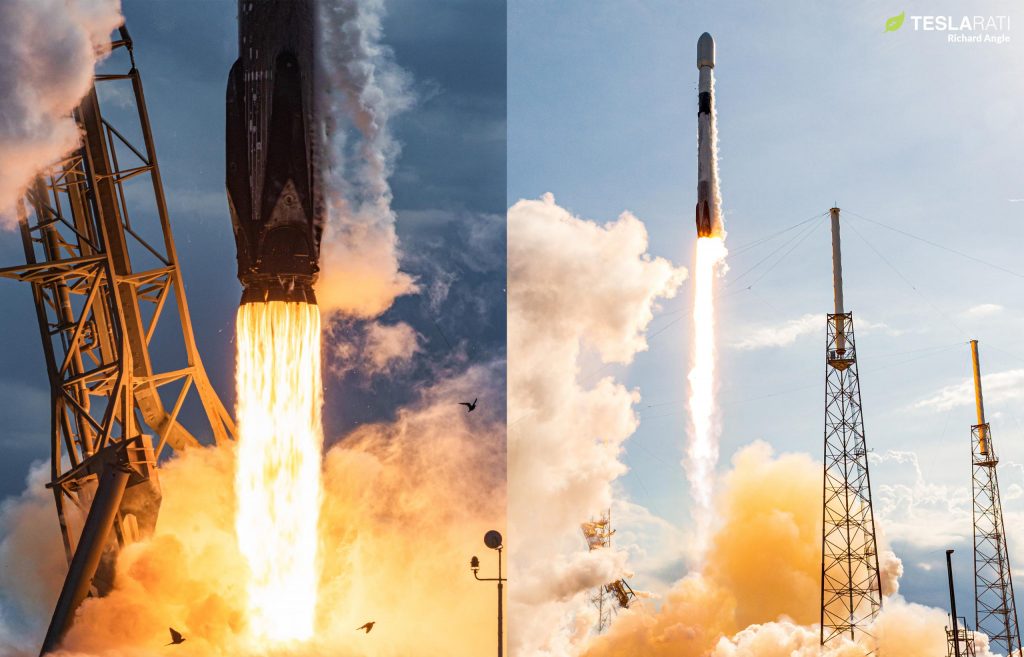
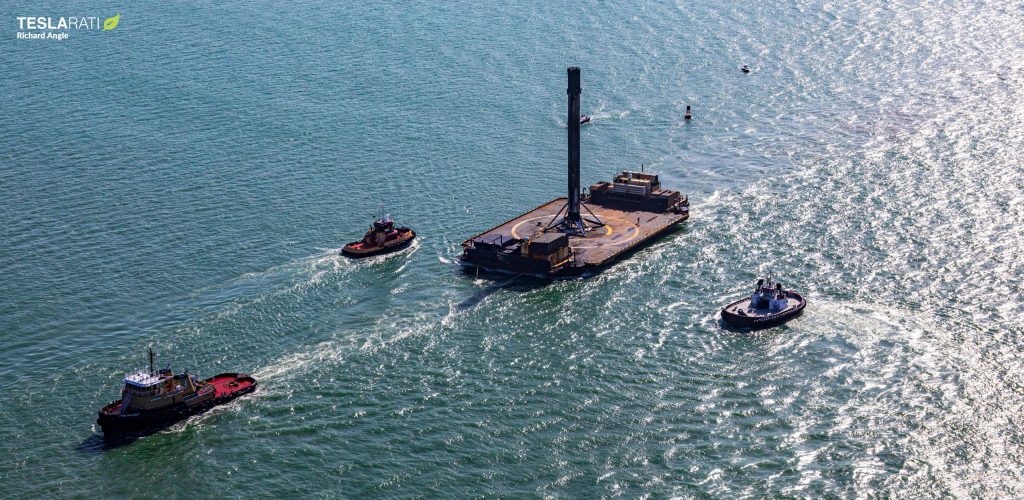

Starlink 4-19 is scheduled to launch from SpaceX’s NASA Kennedy Space Center LC-39A pad no earlier than (NET) 10:50 am EDT (14:50 UTC) on Friday, June 17th. SpaceX’s schedule for the mission will be exceptionally tight and likely offer few – if any – backup opportunities before the end of the month, owing to the company’s need to launch Cargo Dragon on a NASA space station resupply mission as early as June 28th. Unless CRS-25’s launch date has slipped again, the current schedule leaves SpaceX only a handful of days to convert Pad 39A back into its Dragon configuration immediately after Starlink 4-19.
While merely the 48th in a long line of dedicated Starlink internet satellite launches, Starlink 4-19 will be an important mission for SpaceX for a number of other reasons. First, it will be the 100th reuse of a Falcon booster since the first in March 2017. If all goes well, it will also mark SpaceX’s 50th consecutively successful Falcon booster landing. Perhaps most significantly, Starlink 4-19 could be Falcon 9’s 130th consecutively successful launch campaign – just four successes away from breaking the world record of 133 consecutive successes set by variants of Russia’s Soyuz/R-7 rocket.
SpaceX is also scheduled to launch Germany’s SARah-1 radar satellite and a group of rideshare payloads out of California no earlier than (NET) June 18th. Another mysterious launch is scheduled out of SpaceX’s LC-40 Cape Canaveral Space Force Station (CCSFS) pad as early as June 19th. Finally, two more Falcon 9 rockets are scheduled to launch the SES-22 geostationary communications satellite on June 27th or 28th and Cargo Dragon’s CRS-25 resupply mission on June 28th.

News
Tesla FSD fleet is nearing 7 billion total miles, including 2.5 billion city miles
As can be seen on Tesla’s official FSD webpage, vehicles equipped with the system have now navigated over 6.99 billion miles.

Tesla’s Full Self-Driving (Supervised) fleet is closing in on almost 7 billion total miles driven, as per data posted by the company on its official FSD webpage.
These figures hint at the massive scale of data fueling Tesla’s rapid FSD improvements, which have been quite notable as of late.
FSD mileage milestones
As can be seen on Tesla’s official FSD webpage, vehicles equipped with the system have now navigated over 6.99 billion miles. Tesla owner and avid FSD tester Whole Mars Catalog also shared a screenshot indicating that from the nearly 7 billion miles traveled by the FSD fleet, more than 2.5 billion miles were driven inside cities.
City miles are particularly valuable for complex urban scenarios like unprotected turns, pedestrian interactions, and traffic lights. This is also the difference-maker for FSD, as only complex solutions, such as Waymo’s self-driving taxis, operate similarly on inner-city streets. And even then, incidents such as the San Francisco blackouts have proven challenging for sensor-rich vehicles like Waymos.
Tesla’s data edge
Tesla has a number of advantages in the autonomous vehicle sector, one of which is the size of its fleet and the number of vehicles training FSD on real-world roads. Tesla’s nearly 7 billion FSD miles then allow the company to roll out updates that make its vehicles behave like they are being driven by experienced drivers, even if they are operating on their own.
So notable are Tesla’s improvements to FSD that NVIDIA Director of Robotics Jim Fan, after experiencing FSD v14, noted that the system is the first AI that passes what he described as a “Physical Turing Test.”
“Despite knowing exactly how robot learning works, I still find it magical watching the steering wheel turn by itself. First it feels surreal, next it becomes routine. Then, like the smartphone, taking it away actively hurts. This is how humanity gets rewired and glued to god-like technologies,” Fan wrote in a post on X.
News
Tesla starts showing how FSD will change lives in Europe
Local officials tested the system on narrow country roads and were impressed by FSD’s smooth, human-like driving, with some calling the service a game-changer for everyday life in areas that are far from urban centers.

Tesla has launched Europe’s first public shuttle service using Full Self-Driving (Supervised) in the rural Eifelkreis Bitburg-Prüm region of Germany, demonstrating how the technology can restore independence and mobility for people who struggle with limited transport options.
Local officials tested the system on narrow country roads and were impressed by FSD’s smooth, human-like driving, with some calling the service a game-changer for everyday life in areas that are far from urban centers.
Officials see real impact on rural residents
Arzfeld Mayor Johannes Kuhl and District Administrator Andreas Kruppert personally tested the Tesla shuttle service. This allowed them to see just how well FSD navigated winding lanes and rural roads confidently. Kruppert said, “Autonomous driving sounds like science fiction to many, but we simply see here that it works totally well in rural regions too.” Kuhl, for his part, also noted that FSD “feels like a very experienced driver.”
The pilot complements the area’s “Citizen Bus” program, which provides on-demand rides for elderly residents who can no longer drive themselves. Tesla Europe shared a video of a demonstration of the service, highlighting how FSD gives people their freedom back, even in places where public transport is not as prevalent.
What the Ministry for Economic Affairs and Transport says
Rhineland-Palatinate’s Minister Daniela Schmitt supported the project, praising the collaboration that made this “first of its kind in Europe” possible. As per the ministry, the rural rollout for the service shows FSD’s potential beyond major cities, and it delivers tangible benefits like grocery runs, doctor visits, and social connections for isolated residents.
“Reliable and flexible mobility is especially vital in rural areas. With the launch of a shuttle service using self-driving vehicles (FSD supervised) by Tesla in the Eifelkreis Bitburg-Prüm, an innovative pilot project is now getting underway that complements local community bus services. It is the first project of its kind in Europe.
“The result is a real gain for rural mobility: greater accessibility, more flexibility and tangible benefits for everyday life. A strong signal for innovation, cooperation and future-oriented mobility beyond urban centers,” the ministry wrote in a LinkedIn post.
News
Tesla China quietly posts Robotaxi-related job listing
Tesla China is currently seeking a Low Voltage Electrical Engineer to work on circuit board design for the company’s autonomous vehicles.

Tesla has posted a new job listing in Shanghai explicitly tied to its Robotaxi program, fueling speculation that the company is preparing to launch its dedicated autonomous ride-hailing service in China.
As noted in the listing, Tesla China is currently seeking a Low Voltage Electrical Engineer to work on circuit board design for the company’s autonomous vehicles.
Robotaxi-specific role
The listing, which was shared on social media platform X by industry watcher @tslaming, suggested that Tesla China is looking to fill the role urgently. The job listing itself specifically mentions that the person hired for the role will be working on the Low Voltage Hardware team, which would design the circuit boards that would serve as the nervous system of the Robotaxi.
Key tasks for the role, as indicated in the job listing, include collaboration with PCB layout, firmware, mechanical, program management, and validation teams, among other responsibilities. The role is based in Shanghai.
China Robotaxi launch
China represents a massive potential market for robotaxis, with its dense urban centers and supportive policies in select cities. Tesla has limited permission to roll out FSD in the country, though despite this, its vehicles have been hailed as among the best in the market when it comes to autonomous features. So far, at least, it appears that China supports Tesla’s FSD and Robotaxi rollout.
This was hinted at in November, when Tesla brought the Cybercab to the 8th China International Import Expo (CIIE) in Shanghai, marking the first time that the autonomous two-seater was brought to the Asia-Pacific region. The vehicle, despite not having a release date in China, received a significant amount of interest among the event’s attendees.








